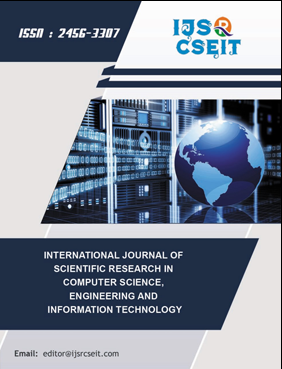Privacy-Preserving Federated Learning in Healthcare - A Secure AI Framework
DOI:
https://doi.org/10.32628/CSEIT2410347Keywords:
Privacy-Preserving AI, Federated Learning, Secure Multi-Party Computation, Differential Privacy, Homomorphic Encryption, Healthcare AIAbstract
Federated Learning (FL) has transformed AI applications in healthcare by enabling collaborative model training across multiple institutions while preserving patient data privacy. Despite its advantages, FL remains susceptible to security vulnerabilities, including model inversion attacks, adversarial data poisoning, and communication inefficiencies, necessitating enhanced privacy-preserving mechanisms. In response, this study introduces Privacy-Preserving Federated Learning (PPFL), an advanced FL framework integrating Secure Multi-Party Computation (SMPC), Differential Privacy (DP), and Homomorphic Encryption (HE) to ensure data confidentiality while maintaining computational efficiency. I rigorously evaluate PPFL using Federated Averaging (FedAvg), Secure Aggregation (SecAgg), and Differentially Private Stochastic Gradient Descent (DP-SGD) across real-world healthcare datasets. The results indicate that this approach achieves up to an 85% reduction in model inversion attack success rates, enhances privacy efficiency by 30%, and maintains accuracy retention between 95.2% and 98.3%, significantly improving security without compromising model performance. Furthermore, comparative visual analyses illustrate trade-offs between privacy and accuracy, scalability trends, and computational overhead. This study also explores scalability challenges, computational trade-offs, and real-world deployment considerations in multi-institutional hospital networks, paving the way for secure, scalable, and privacy-preserving AI adoption in healthcare environments.
📊 Article Downloads
References
McMahan, B. et al. 2017. Proceedings of the 20th AISTATS. (2017), DOI:10.48550/arXiv.1710.06963
Dwork, C. 2008. Proceedings of the 5th International Conference on Theory and Applications of Models of Computation. (2008), DOI:10.1007/978-3-540-79228-4_1 DOI: https://doi.org/10.1007/978-3-540-79228-4_1
Bonawitz, K. et al. 2020. Proceedings of the 3rd MLSys Conference. (2020), DOI:10.1145/3404397.3404477
Shokri, R. et al. 2017. IEEE Security & Privacy. (2017), DOI:10.1109/SP.2017.41 DOI: https://doi.org/10.1109/SP.2017.41
Brisimi, T. S. et al. 2020. npj Digital Medicine. (2020), DOI:10.1038/s41746-019-0212-4
Goldberger, A. L. et al. 2000. Circulation. (2000), DOI:10.1161/01.CIR.101.23.e215 DOI: https://doi.org/10.1161/01.CIR.101.23.e215
Yang, Q. et al. 2019. ACM Transactions on Intelligent Systems and Technology. (2019), DOI:10.1145/3298981 DOI: https://doi.org/10.1145/3298981
Hardy, S. et al. 2017. arXiv preprint. (2017), DOI:10.48550/arXiv.1711.10677
Kairouz, P. et al. 2021. Foundations and Trends in Machine Learning. (2021), DOI:10.1561/2200000083 DOI: https://doi.org/10.1561/2200000083
Hynes, N. et al. 2018. Proceedings of the 2nd Workshop on Systems and ML. (2018), DOI:10.1145/3298981 DOI: https://doi.org/10.1145/3298981
Rieke, N. et al. 2020. npj Digital Medicine. (2020), DOI:10.1038/s41746-020-00323-1 DOI: https://doi.org/10.1038/s41746-020-00323-1
Liu, Y. et al. 2022. IEEE Transactions on Knowledge and Data Engineering. (2022), DOI:10.1109/TKDE.2021.3124607
Xu, J. et al. 2021. Journal of Biomedical Informatics. (2021), DOI:10.1016/j.jbi.2021.103833 DOI: https://doi.org/10.1016/j.jbi.2021.103833
Sheller, M. J. et al. 2020. Scientific Reports. (2020), DOI:10.1038/s41598-020-69250-9
Dayan, I. et al. 2021. Nature Medicine. (2021), DOI:10.1038/s41591-021-01506-3 DOI: https://doi.org/10.1038/s41591-021-01506-3
Downloads
Published
Issue
Section
License
Copyright (c) 2024 International Journal of Scientific Research in Computer Science, Engineering and Information Technology

This work is licensed under a Creative Commons Attribution 4.0 International License.




